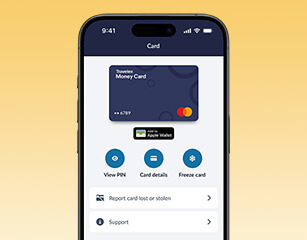GBP to EUR - convert British pound to euro
Find out everything you need to know about the latest exchange rates between the euro and the British pound, and how to convert your GBP to EUR.
Please try again shortly.

Travelex Money Card
- A safe way to carry and spend travel money abroad
- Load up to 22 currencies on your Travelex Money Card
- Manage your balance 24/7 through the Travelex Money App
- No commission or hidden charges
- Freeze and unfreeze your card, reveal your PIN or other card details via the Travelex Money App
- Pay with confidence anywhere Mastercard Prepaid is accepted


Upgrade your travel money.
Join Travelex Plus for free and get a first trip discount valid for 30 days. Plus, exclusive members- only sales, 0% commission however you buy, and get alerted when our rates are at their best and we even freeze them for you until the next day.
GBP to EUR exchange rate
Explore historical GBP to EUR exchange rates.
Last month
Unfortunately, this feature isn’t available yet.
We’re currently assessing customer interest in rate alerts, thanks for expressing yours. You can return to this page to see up to date rates.
How to convert British pounds to euros
Get your travel money quickly, easily, and securely.
-
Type in your amount
Type in your amount
The calculator will be automatically set to EUR. Enter your amount in either GBP or EUR. -
Calculate your conversion
Calculate your conversion
Review and adjust the conversion amounts as required. -
Order your currency
Order your currency
Once you are happy with your quote, order EUR for home delivery or click & collect.
Explore more information on euros
Discover how to get your euros with ease and learn more about the currency.
Convert GBP to EUR
Check out our euro currency conversion table to see a quick snapshot of how far your travel money will go.
Convert British pounds to euros
| GBP |
|---|
Convert euros to British pounds
| GBP |
|---|
EUR options
Get euros however it suits you with our flexible options. Choose a secure and convenient Travelex Money Card, cash, or a combination of both.

Travel Money Card
The Travelex Money Card is the quick, easy and secure way to spend abroad.
- Lock in your rates1
- 22 currencies available
- Easy budget management
- Accepted at millions of locations

Cash
Cash and card will make sure you’re ready for any kind of spend in every country.
- Be ready to tip when expected
- Shop local markets
- Avoid unnecessary ATM withdrawals
What our customers say
See why they trust Travelex services.
Check rates for different currencies
Explore our travel guides
Get inspired for your next adventure with our travel tips and guides. Discover hidden gems, must-see attractions, and expert recommendations to make the most of your trip.
- 1 Lock in exchange rates means that customers can review and reserve exchange rates at their discretion, by purchasing travel money in advance. Any additional purchases will be subject to the prevailing exchange rate at the time of each new transaction.
- Travelex Money Card is issued by PrePay Technologies Limited pursuant to license by Mastercard International.
- PrePay Technologies Limited is authorised by the Financial Conduct Authority under the Electronic Money Regulations 2011 (FRN: 900010) for the issuing of electronic money and payment instruments. Mastercard is a registered trademark, and the circles design is a trademark of Mastercard International Incorporated.
- Exchange rates displayed on this page are subject to market fluctuations. The exchange rate applied to your order will be clearly displayed at the time of purchase. For calculation purposes, including trend graphs and conversion tables, we use our consumer sell rate for our cash product. Please note that rates can vary, and the final rate applied will be confirmed when you place your order.









